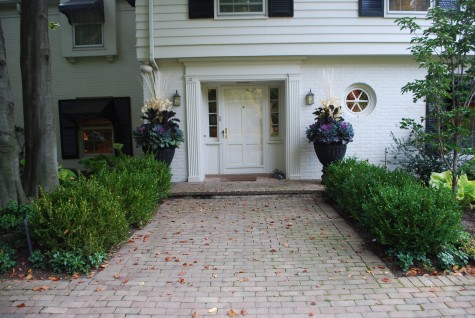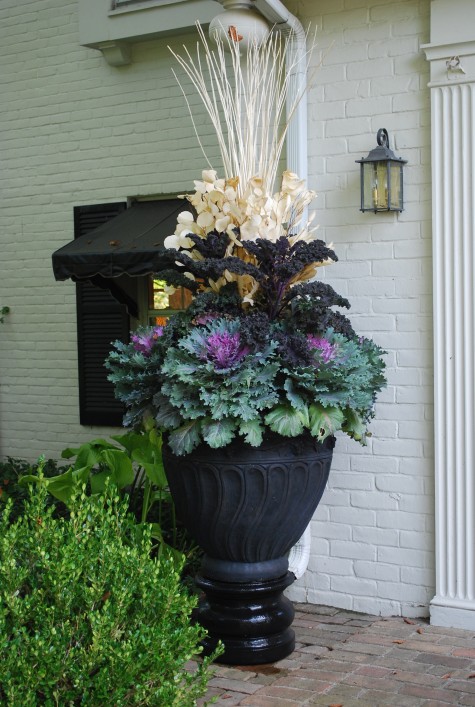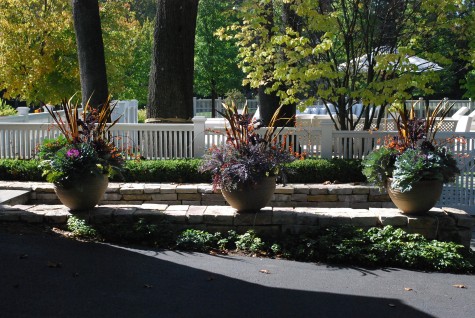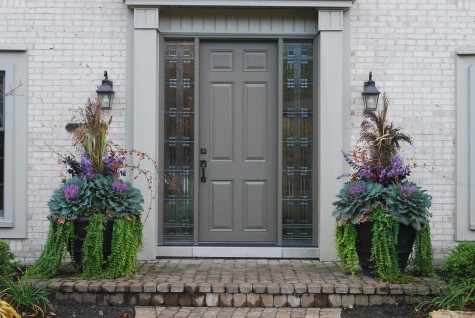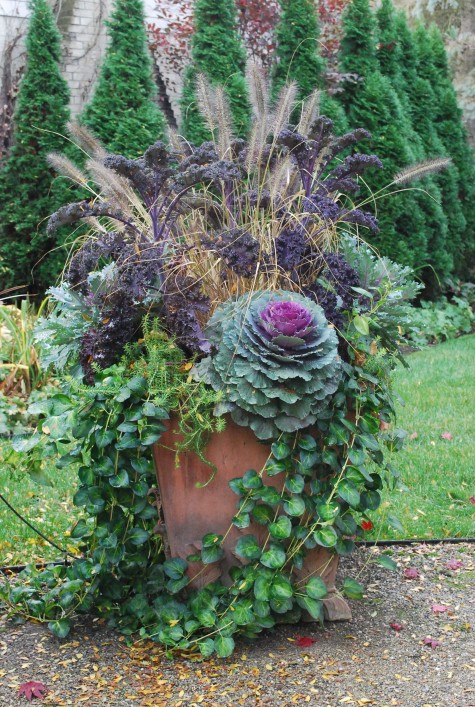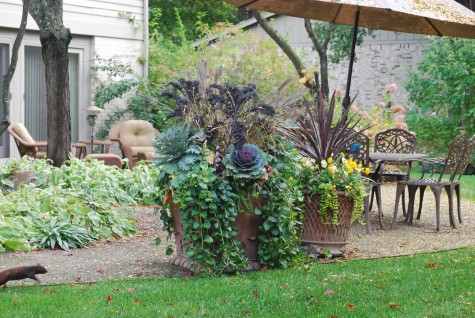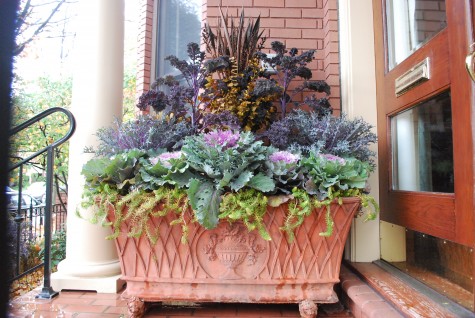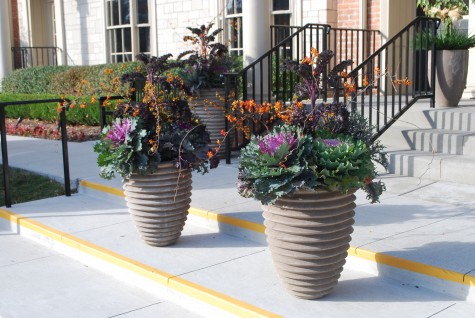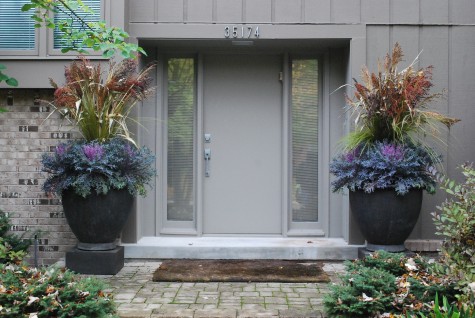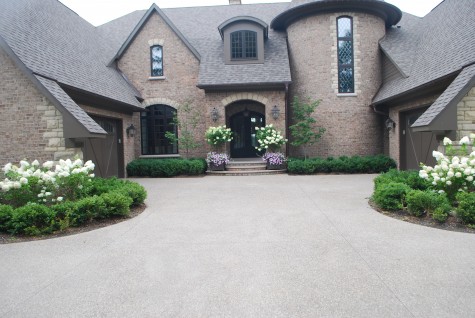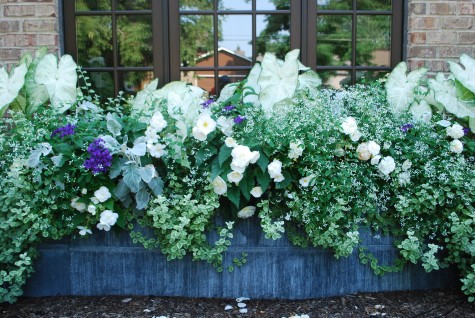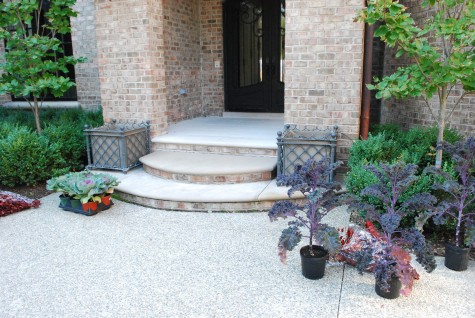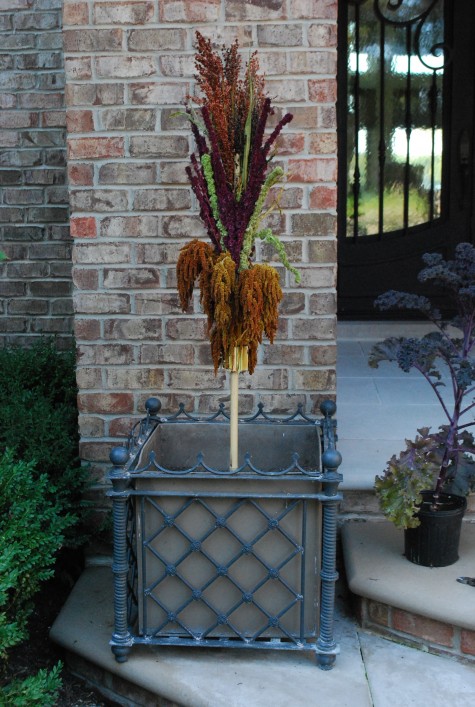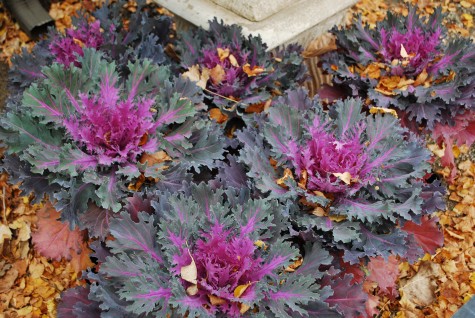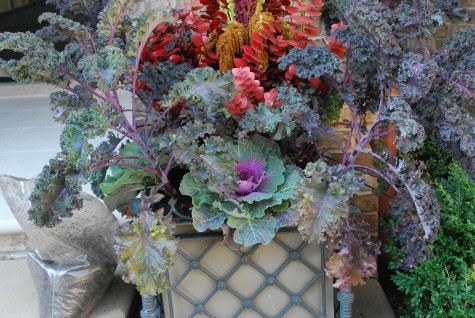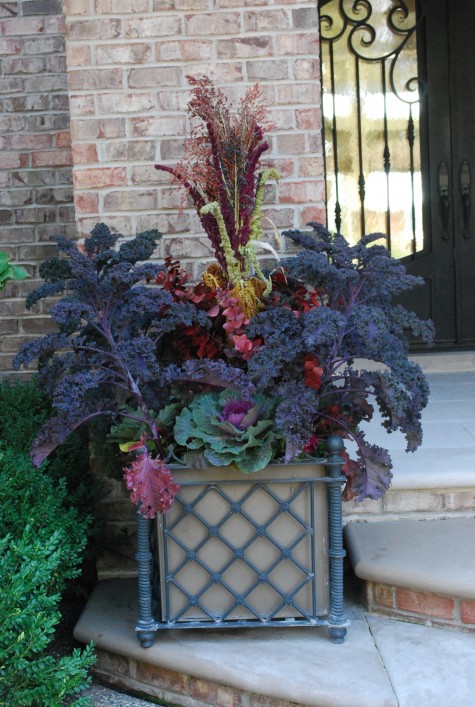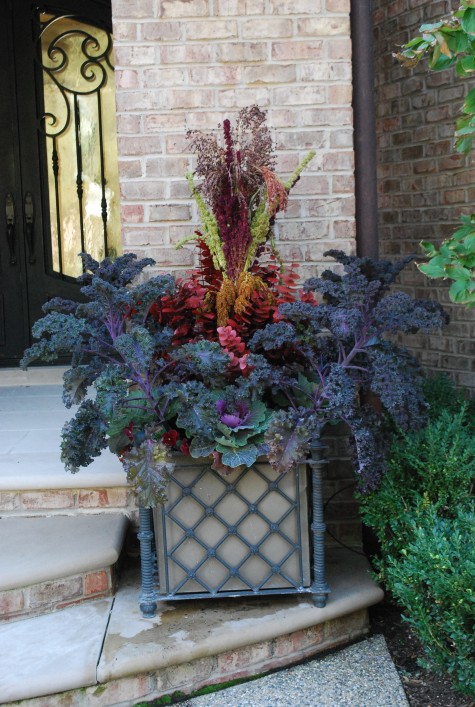 It interests me that the phrase “fall color” brings such specific color to mind. The color I associate with spring-the yellows of daffodils, and the blues so specific to pansies is quite unlike the color I see in the landscape this time of year. I got to work just before dawn this morning; the sky at 7:10 am was spectacularly fall-like. Fall color often refers to the changing of the color of the tree leaves-that final super nova of color before the leaves drop. Our fall tree leaf color has been next to non-existent this year. With only 6 days to go to Halloween, we have not yet had a frost. But there is still plenty of fall color out there.
It interests me that the phrase “fall color” brings such specific color to mind. The color I associate with spring-the yellows of daffodils, and the blues so specific to pansies is quite unlike the color I see in the landscape this time of year. I got to work just before dawn this morning; the sky at 7:10 am was spectacularly fall-like. Fall color often refers to the changing of the color of the tree leaves-that final super nova of color before the leaves drop. Our fall tree leaf color has been next to non-existent this year. With only 6 days to go to Halloween, we have not yet had a frost. But there is still plenty of fall color out there.
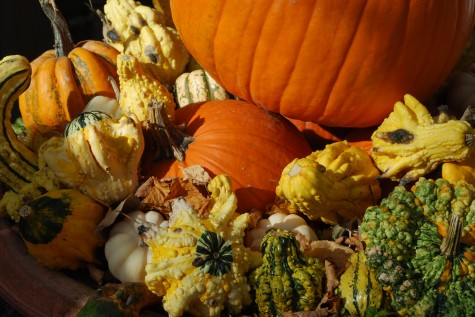 There is plenty of fall color in the landscape. Every bin of gourds, and every stack of pumpkins at market is brimming with the ripe fruits of the fall harvest. The creams, yellows, oranges and dark greens are the signature colors of our fall.
There is plenty of fall color in the landscape. Every bin of gourds, and every stack of pumpkins at market is brimming with the ripe fruits of the fall harvest. The creams, yellows, oranges and dark greens are the signature colors of our fall.
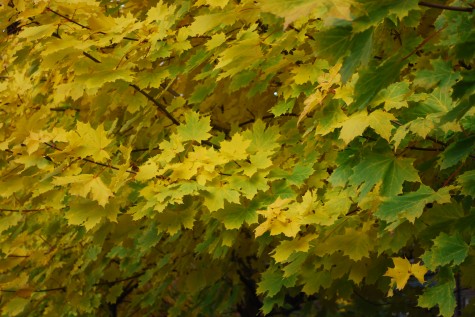 The leaves of my Princeton Gold Maples are still as green as can be. I took this picture last year, on today’s date. The fall weather largely initiates and dictates the turning of the leaves. The leaves on my trees are that special shade of lukewarm faded green that occurs when the fall temperatures stay warm. It is possible the leaves will brown and drop this year without fanfare.
The leaves of my Princeton Gold Maples are still as green as can be. I took this picture last year, on today’s date. The fall weather largely initiates and dictates the turning of the leaves. The leaves on my trees are that special shade of lukewarm faded green that occurs when the fall temperatures stay warm. It is possible the leaves will brown and drop this year without fanfare.
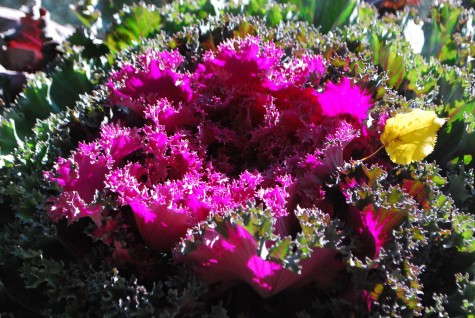 The kales and cabbages have colored up-our night temperatures have been just low enough to have produced this vivid cerise pink. Fall color is very much influenced by the night temperatures, and the quality of light at this time of year. That low in the sky light that casts long shadows bring the colors of fall to life. I rarely take photographs in full sun during the summer. That sun washes out any color. The fall sun enriches the color of anything it touches.
The kales and cabbages have colored up-our night temperatures have been just low enough to have produced this vivid cerise pink. Fall color is very much influenced by the night temperatures, and the quality of light at this time of year. That low in the sky light that casts long shadows bring the colors of fall to life. I rarely take photographs in full sun during the summer. That sun washes out any color. The fall sun enriches the color of anything it touches.
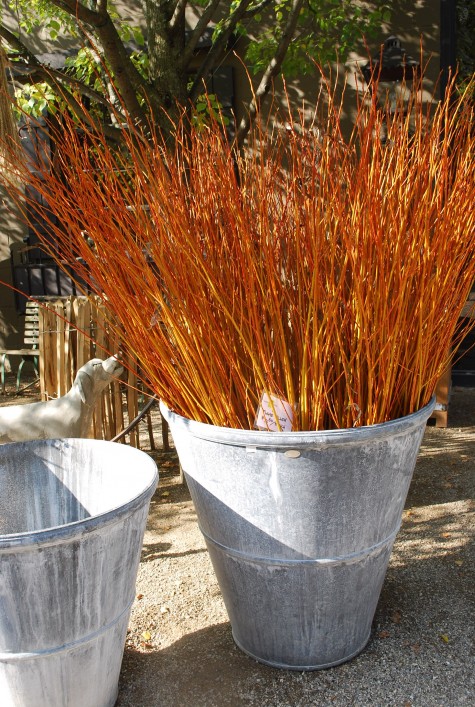 Every year in the fall we get a shipment of flame willow branch bunches. Their arrival is a sure sign of fall; their fall color is brilliant. This color mix of orange, yellow and brown turns heads-that includes mine. It could not be more different than the color of branches in the spring. I am very glad that I garden in a zone with four distinct seasons. The change of seasons is a pleasure to this gardener.
Every year in the fall we get a shipment of flame willow branch bunches. Their arrival is a sure sign of fall; their fall color is brilliant. This color mix of orange, yellow and brown turns heads-that includes mine. It could not be more different than the color of branches in the spring. I am very glad that I garden in a zone with four distinct seasons. The change of seasons is a pleasure to this gardener.
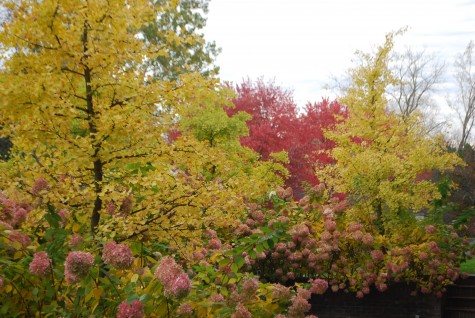 The best fall color I have seen yet-a client with gingkos underplanted with limelight hydrangeas. The hydrangeas have gone rose pink; the gingko leaves are in that electirc lime green stage just before they yellow, and drop. A gingko drops all of its leaves on the same day. I am sure this synchronized leaf drop is somewhere on the list of the top 100,000 natural phenomena worth experiencing. My idea of a perfect day off-a chair waiting for me in the garden, the day the gingko leaves decide to drop.
The best fall color I have seen yet-a client with gingkos underplanted with limelight hydrangeas. The hydrangeas have gone rose pink; the gingko leaves are in that electirc lime green stage just before they yellow, and drop. A gingko drops all of its leaves on the same day. I am sure this synchronized leaf drop is somewhere on the list of the top 100,000 natural phenomena worth experiencing. My idea of a perfect day off-a chair waiting for me in the garden, the day the gingko leaves decide to drop.
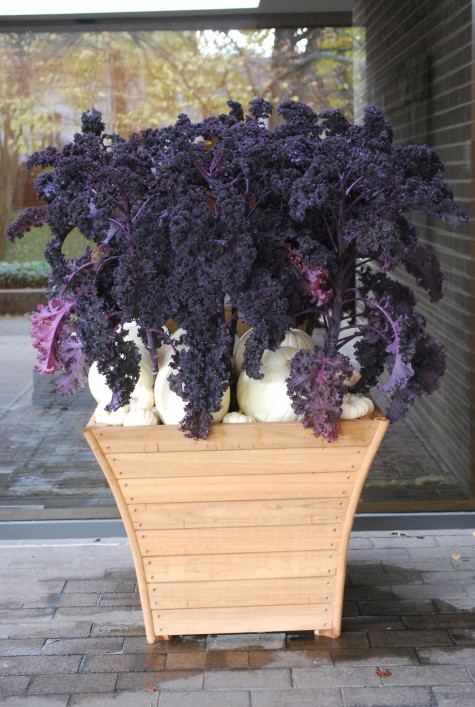 These clients have a big love for that mid century modern aesthetic. I did their fall pots in black and white-stalky redbor kale, with a top dressing of big and tiny white pumpkins. This is a most minimal version of our range of fall colors.
These clients have a big love for that mid century modern aesthetic. I did their fall pots in black and white-stalky redbor kale, with a top dressing of big and tiny white pumpkins. This is a most minimal version of our range of fall colors.
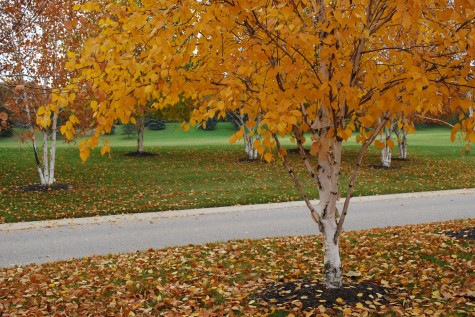 The Himalayan white barked birch-betulus Jacquemontii-is best known for its white bark that emerges and represents at a very early age. The tawny yellow fall color is equally as beautiful. Choosing plants for the landscape that have something to say in all of our seasons is a great goal for any gardener.
The Himalayan white barked birch-betulus Jacquemontii-is best known for its white bark that emerges and represents at a very early age. The tawny yellow fall color is equally as beautiful. Choosing plants for the landscape that have something to say in all of our seasons is a great goal for any gardener.
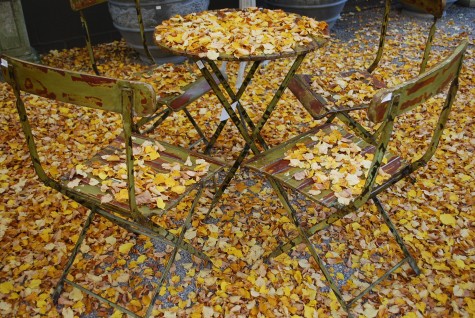 It is not enough to be a gardener. It matters-the appreciation and understanding of the process we call fall- the process we know to be nature’s doing. Great gardeners are naturalists-observers of the natural world. Fall color is so much more than a well known phrase. It is one briefly seen phase in the process we gardeners call living. Luckily, we get some version of it every year around this time. This bistro table and chairs covered with the falling leaves of the lindens-an eloquent statement about the end of the gardening season.
It is not enough to be a gardener. It matters-the appreciation and understanding of the process we call fall- the process we know to be nature’s doing. Great gardeners are naturalists-observers of the natural world. Fall color is so much more than a well known phrase. It is one briefly seen phase in the process we gardeners call living. Luckily, we get some version of it every year around this time. This bistro table and chairs covered with the falling leaves of the lindens-an eloquent statement about the end of the gardening season.
